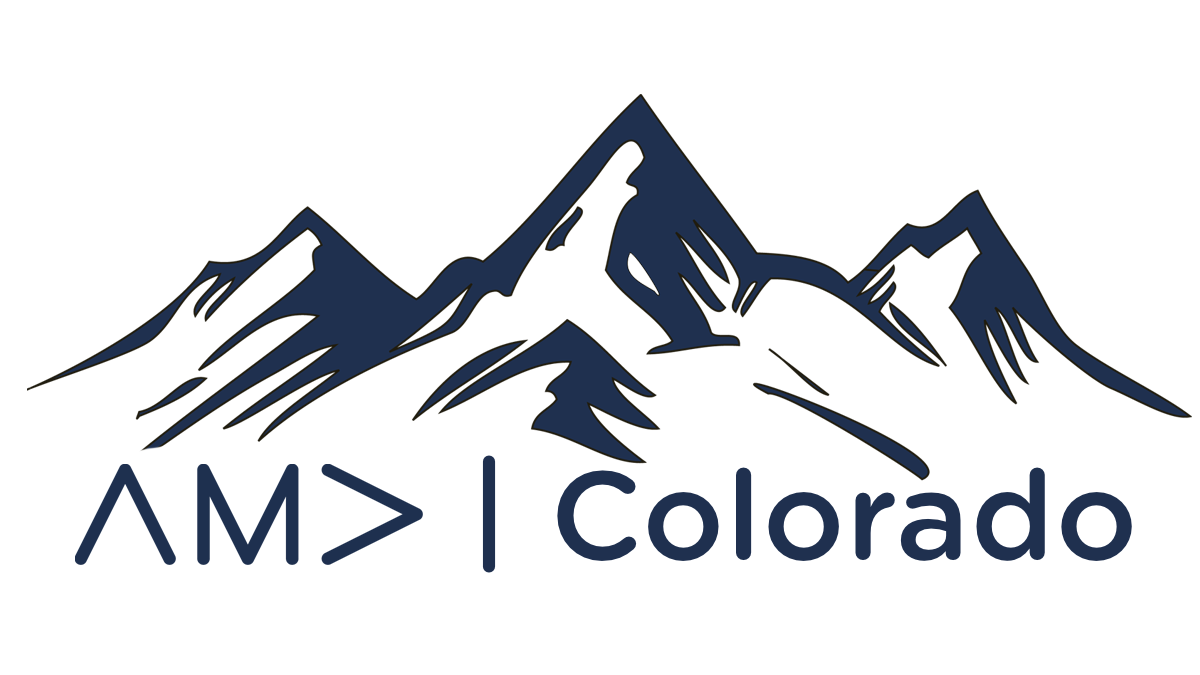Imagine stepping into the future where marketing strategies are revolutionized by cutting-edge tactics. Top insights from marketing leaders such as a Chief Marketing Officer and Digital Marketing Director reveal what the marketing landscape of 2025 holds. Our experts discuss everything from leveraging user-generated content to transforming video marketing with AI.
- Leverage User-Generated Content and Sustainability
User-Generated Content (UGC) and sustainable marketing are becoming essential strategies for brands looking to connect authentically with their audiences, so I’d say they will be among top strategies in 2025.
UGC is not just a trend; it’s a powerful tool that builds trust and community. With 79% of consumers stating that UGC significantly influences their purchasing decisions, brands can leverage this content to create authentic connections. For instance, when a customer shares a photo of their new shoes on Instagram using a brand-specific hashtag, it not only showcases the product but also serves as social proof to potential buyers.
Brands like Coca-Cola have successfully used UGC through campaigns like #ShareACoke, encouraging customers to share moments with their products. This not only boosts engagement but also increases conversions: brands that feature UGC see up to 29% higher website conversions compared to those that don’t.
On the sustainability front, consumers are increasingly prioritizing eco-friendly practices. In fact, studies show that 60%-72% of consumers are willing to pay more for products with sustainable packaging. Brands need to demonstrate genuine commitment to sustainability—not just as a marketing gimmick but as part of their core values. For example, Patagonia stands out by integrating sustainability into its mission, promoting transparency in sourcing and manufacturing processes. This approach resonates deeply with consumers who are looking for brands that align with their values.
Combining UGC with sustainable marketing can amplify both strategies. Encourage customers to share their eco-friendly practices or experiences with your products. For instance, for our client in the beauty industry we launched a campaign inviting users to post about how they recycle packaging or use products sustainably, creating a community around shared values.
Kate Dzhevaga, CMO, Head of Growth, SYMVOLT
- Embrace Thought Leadership on LinkedIn
One of the top tactics we’ll see in 2025 is thought leadership/employee-led marketing on LinkedIn.
Thought leadership has traditionally been a personal branding exercise for founders and executives. However, late last year LinkedIn introduced “Thought Leader Ads,” and this has changed the game completely.
At Copper, we now have executives post content relevant to our ideal customer profile in their own words. Then we boost those posts as paid advertising. With LinkedIn’s analytics tools, we were able to identify that nearly 20% of our opportunities were influenced by this content on LinkedIn, even if they didn’t directly click on any links.
Real people talking about the problems our ICP experiences is more effective than that same content coming from a faceless company. It gives a more human and authentic voice to the stories companies are trying to tell.
Jessica Andrews, VP Marketing, Copper CRM
- Utilize Micro-Influencers in Healthcare
I believe micro-influencers in healthcare will dominate marketing in 2025, based on what I’m seeing in my wellness campaigns. Last month, our diabetes awareness campaign with local nutritionists got 3x more engagement than our traditional ads. From my healthcare marketing experience, people trust relatable experts who share authentic stories over polished corporate messages.
Ryan Miller, Founder & CEO, Etna Interactive
- Optimize Local SEO for Community Engagement
In 2025, optimizing Local SEO will likely be a key marketing strategy, connecting local businesses with their communities by tailoring search results to users’ geographical locations.
From experience, I’ve seen Local SEO boost foot traffic to stores and increase neighborhood digital engagement. As a marketing consultant, aligning online strategies with local intent results in personalized customer interactions and stronger regional brand loyalty.
I’ve advised clients to leverage Google My Business, ensuring accurate listings and updates to effectively capture local attention. Encouraging local reviews and using region-specific keywords also enhance visibility. As consumers seek localized experiences, refining Local SEO practices will be essential for businesses to compete and thrive in the evolving digital landscape.
Iryna Melnyk, Marketing Consultant, Jose Angelo Studios
- Focus on AI-Driven Content and Short Videos
In 2025, one of the top marketing strategies will be optimizing content for AI-driven search engines while incorporating short-form videos to answer questions your audience is actively asking about your area of expertise.
AI-powered search tools like chatbots and conversational search engines are changing how people find information. These platforms prioritize content that directly addresses user queries in a clear, concise, and engaging format. Businesses will stay ahead by tailoring their content to meet these needs, ensuring it’s structured for AI readability with conversational tones, direct answers, and relevant keywords.
Pairing this with short-form video creates a powerful combination. For example, imagine a potential customer searching for tips or solutions in your field. A 30-second video providing a straightforward answer could rank highly on AI-driven platforms while also being shareable on social media. Short videos allow you to educate and engage viewers while showcasing your expertise in a way that’s fast and easy to digest.
To implement this strategy, research common questions your audience is asking—using tools like Google’s “People Also Ask” section, AI tools, or platform analytics—and craft video responses that are informative, visually engaging, and optimized with captions and metadata for search.
By focusing on AI optimization and leveraging short-form video to answer audience questions directly, you can boost visibility, establish authority, and connect with your audience more effectively than ever.
Karen Etchells, Digital Marketing Strategist, Innovast Digital Marketing
- Build Trust with Thought Leadership
Thought leadership is one of the marketing channels I believe will dominate 2025 and will be all about producing real, informative content where brands are known as experts. For me, consumers are becoming more demanding, they want value and knowledge from the companies they do business with. For instance, a company that posts tutorials, industry insider techniques, or fresh concepts to their industry can create trust and engagement.
Personally, I find this approach useful because it’s able to move past ad clutter and offer something. More about building a trust and knowledge-based relationship than selling directly. For thought leadership to work, brands will need to go all in on storytelling and transparency. I find that audiences find value in real-world narratives or those that tackle industry issues directly. Showing a project from beginning to end, for example, and discussing the learnings, can speak volumes to existing and potential clients.
Jay Soni, Marketing Specialist, Founder and CEO, Yorkshire Fabric Shop
- Prioritize Hyper-Personalization and Funnel Optimization
By 2025, one of the top marketing strategies for companies like ours will be hyper-personalization combined with advanced funnel optimization. Couples planning destination weddings expect tailored experiences that resonate with their specific dreams and preferences. For example, dynamic website experiences based on user behavior—such as showcasing Mexico’s top resorts to users searching for affordable beachfront venues—will enhance engagement and improve conversions. This personalized approach not only meets expectations but also builds deeper connections with our audience by offering solutions that feel custom-made.
Optimizing leads through improved funnel strategies will also play a pivotal role. In 2025, we foresee advancements in marketing automation enabling more precise targeting at every stage of the customer journey. We plan to refine our funnel by integrating smarter email campaigns, retargeting ads, and data-driven insights to nurture leads effectively. For instance, after a couple requests a quote for a Dominican Republic wedding, we can automatically send tailored follow-ups with pricing, testimonials, and curated blog content to guide them further along the decision-making process. This focus on personalization and strategic lead management will help us stay competitive, improve customer satisfaction, and drive higher booking rates.
Garrett Nutgrass, Marketing Content Strategist, Destify
- Combine Authenticity with Strategic Automation
Based on the LinkedIn trends document and industry insights, I predict that authentic, strategic automation will be a dominant marketing force in 2025. We’re already seeing that video content gets 1.4x more engagement, but the real breakthrough will be in combining automated systems with genuine human connection.
The shift will be from “being everywhere” to “being consistently present where it matters.” I’m seeing businesses succeed by using smart automation to maintain regular, meaningful engagement while freeing up time for deeper audience connections. The focus won’t just be on automating tasks, but on creating systematic approaches that preserve authenticity.
For example, instead of trying to post daily across all platforms, successful marketers will use automation to maintain consistent presence on their most engaged channels while investing the saved time in creating more impactful, personal interactions. The winners in 2025 won’t be those with the most content, but those who best balance efficiency with genuine engagement.
This aligns perfectly with LinkedIn’s 2025 prediction that audiences will continue to value content that’s helpful and professional, particularly focused on industry insights and business advice. It’s about working smarter, not harder, while maintaining the human touch that drives real engagement.
Lisa Benson, Marketing Strategist, DeBella DeBall Designs
- Optimize Content for AI-Generated Responses
One of the biggest marketing strategies that we see gaining traction among major players and expected to reshape the landscape in 2025 is optimizing content for AI-generated responses. In multiple surveys, users report turning away from Google, frustrated by irrelevant results, excessive ads, and the increasing effort required to find meaningful answers. As traffic gradually shifts away from Google to AI-enhanced search engines like Bing, ChatGPT, and Perplexity, we marketers are rethinking how to approach content creation.
The new strategy, referred to as Generative Engine Optimization (GEO) or AI Optimization (AIO), is about crafting content that works seamlessly with AI systems to ensure it’s accurately represented in their answers. GEO/AIO involves a targeted approach to content optimization: simplifying language, citing credible sources, improving fluency, and adopting a conversational tone. Using long-tail keywords is another key tactic to improve visibility in AI-driven search results.
By adopting GEO/AIO techniques, we can significantly increase the chances of content being selected and synthesized by AI systems, providing greater exposure in AI-powered search outputs and content delivery.
Alex Martkovich, Founder, New Digital
- Adopt Human-to-Human Marketing
In 2025, I see “human-to-human” marketing taking the lead. With technology advancing at lightning speed, consumers are becoming more aware of when they’re being sold to by a bot or a script. Let’s face it: people don’t want to feel like just another data point. They want real connections, real conversations, and brands that get them.
It’s no longer going to be about selling a product anymore. The focus will shift to building relationships. When people feel like you genuinely care about them—when they feel heard, understood, and valued—that’s where loyalty begins. Think about it: We all want to feel like we matter. We want to feel like brands aren’t just trying to push something on us, but that they can actually solve a problem we have or make our lives better.
Personalized communication will be key in 2025. We’re talking less generic emails and more tailored, thoughtful interactions that show you’ve been paying attention. Whether it’s sending a birthday message, recommending a product based on their past interactions, or simply checking in to see how they’re doing, making every communication feel meaningful will be the key to conversions.
People are tired of being bombarded with flashy ads and automated messages. The brands that can understand their audience on a deeper level—tapping into what they care about and what they need are the ones who will pull ahead. The focus will be on creating experiences that feel like you’re talking to a friend who knows you, not a faceless corporation.
In 2025, brands that get this will rise above the noise. They’ll connect with their audiences in ways that feel authentic and human—because at the end of the day, people crave real connections. Marketing isn’t just about getting a sale. At its core, it’s about building a lasting relationship that goes beyond a transaction and that’s the future we’re headed toward.
Michelle Merz, Marketing Consultant, Silence and Sonder
- Deliver Hyper-Personalized Customer Experiences
I believe one of the most impactful strategies in 2025 will be hyper-personalized customer experiences, driven by advancements in AI and data analytics. The ability to deliver tailored messaging, offers, and engagement at the individual level is no longer optional—it’s becoming the expectation.
Consumers increasingly value meaningful connections with brands that understand their needs, preferences, and values. By leveraging tools like predictive analytics, real-time data, and AI-driven insights, marketers can craft experiences that feel uniquely personal while scaling them across campaigns.
Companies like Netflix and Amazon are already leading the way. Netflix uses advanced algorithms to analyze user viewing habits, offering highly personalized content recommendations. Similarly, Amazon leverages AI-driven product recommendations based on browsing and purchase history, creating a tailored shopping experience that drives loyalty and repeat purchases.
On the other hand, brands like Toys “R” Us illustrate what happens when companies fail to adapt. The iconic toy retailer struggled to compete with e-commerce giants like Amazon, which offered superior personalization and convenience. By not embracing customer-centric strategies, Toys “R” Us lost relevance, ultimately filing for bankruptcy in 2017.
Brands that embrace hyper-personalization responsibly, with transparency and respect for privacy, will build trust and loyalty, ultimately leading to stronger customer relationships. In 2025, understanding your customer on a deeper level will no longer be a luxury—it will be the key to standing out in a crowded marketplace.
Jason Holicky, Owner and Marketing Consultant, Holicky Corporation
- Create Impactful Soundless Advertising
The marketing strategy I believe will dominate in 2025 is soundless advertising. With over 85% of Facebook video views taking place without sound, creating visuals that deliver a clear and engaging message without relying on audio will become a necessity. People are consuming content on their phones in public spaces, at work, or while multitasking, and many leave their devices muted. This shift means brands need to rethink how they communicate visually to ensure their message comes across effectively.
Using strong visuals, concise text overlays, and captions allows brands to adapt effectively to this upcoming trend. These elements grab attention while conveying information even when there’s no sound. Platforms like Instagram and TikTok are already seeing this trend take shape, and it’s only going to grow as more users expect quick, impactful content they can engage with anywhere.
It’s not enough to rely on eye-catching visuals alone. The messaging needs to be clear and intentional, guiding viewers through the story without needing narration or background audio. Brands that prioritize this shift will be better positioned to capture the attention of their audience in 2025 and beyond.
Tracie Crites, Chief Marketing Officer, HEAVY Equipment Appraisal
- Dominate with Voice Search and AEO
By 2025, voice search and AEO will completely change the face of digital marketing.
With the rise of voice assistants for performing searches, businesses no longer have any choice but to deviate from dependence on keyword strategies. Voice search requires clear, concise answers to direct questions—no longer about matching keywords; rather, it’s all about delivering exact, accurate responses in real time.
AEO means anticipating what exactly the users want to know and answering directly.
Structured data, schema markup, and featured snippets will be critical for the same—as they will enable search engines to pull your content as a definite answer.
Ditch the broad keywords for long-tail, question-based queries such as “How do I…?” or “What’s the best way to…?”—and make sure your content is structured to answer them directly.
Voice search also requires understanding how people actually speak—accounting for regional dialects, slang, and natural phrasing. Algorithms are getting smarter, learning faster, and adapting to user intent.
Brands that fail to optimize for this shift will be left behind. Those who can combine AEO with voice search strategies will probably dominate.
Peter Lewis, Chief Marketing Officer, Strategic Pete
- Integrate AI and ML in Marketing
In 2025, one of the top marketing strategies will be the thorough fusion of Artificial Intelligence (AI) and Machine Learning (ML) in all areas of marketing.
AI and ML will change how companies grasp, interact with, and attract their main consumers.
Here are some specific applications:
- Hyper-Personalized Marketing: AI will facilitate marketing campaigns that are perfectly personalized to individuals’ preferences, behaviors, and real-time data.
- Predictive Analytics: Reviewing a vast amount of data, marketing professionals will be able to predict what customers want and need. This gives a head start for campaigns and product deals.
- Enhanced Customer Experience: AI-powered chatbots and virtual assistants will provide 24/7 customer support and personalized recommendations, improving overall customer satisfaction.
- Automated Content Creation: AI can make quality content like blogs, social media posts, and product details, saving time and energy.
- Data-Driven Decision Making: AI’s insights can help marketers make educated choices about spending, channel refining, and campaign outcomes.
By embracing AI and ML, marketers can unlock new opportunities to build stronger customer relationships, drive growth, and stay ahead of the competition.
Shivam Singh, Founder, ShivamSEO
- Capitalize on Short-Form Video
I think short-form video will be one of the biggest marketing methods in 2025, and this will be via TikTok, YouTube Shorts, Facebook, Instagram Reels. These websites are masters of the click-through, and algorithms favor tiny bite-sized chunks of info that consumers scroll on. This is the amazing part about short videos: they allow brands to feel authentic and real in a friendly, casual way. For example, short behind-the-scenes or mini stories from a company can get viewers emotional attachment. With military personnel and organizations trying to reach more people, this format is an ideal medium for a powerful, short-form message that is human.
A second key reason short-form video marketing is going to take off is that it can be used for all types of purposes, from awareness to conversion. They’re platforms that inspire you to be creative and deliver real-time analytics to adjust plans. An excellent prototype could be 30-second videos of leadership advice or service case studies in a format that motivates and educates young people.
Lydia Valentine, Co-Founder and Chief Marketing Officer, Cohort XIII LLC
- Implement Omnichannel Content Atomization
In 2025, we’re going to see a revolutionary transformation in content strategy that I’m calling “omnichannel content atomization”—where a single piece of core content becomes a dynamic, shape-shifting asset that can instantaneously adapt across multiple platforms and formats. While content repurposing isn’t a novel concept, 2025 marks the year when this strategy becomes truly mainstream, with AI-powered tools enabling even newcomers and smaller marketing teams to effortlessly deconstruct and redistribute content across channels.
With AI-powered tools now enabling unprecedented content restructuring, marketers will no longer think of content as a static artifact, but as a living, breathing ecosystem that can be dynamically parsed, reinterpreted, and redistributed with minimal human intervention.
Imagine a single thought leadership piece that can be instantaneously transformed into a podcast script, LinkedIn long-form article, TikTok video series, Instagram carousel, and Twitter thread—all while maintaining semantic integrity and brand voice. This approach isn’t just about efficiency; it’s about meeting audiences exactly where they are, in the format they prefer, creating a more personalized and engaging content experience that transcends traditional marketing boundaries.
Ashwin Thapliyal, Head of Marketing, Exemplifi
- Shift to Niche Digital Platforms
Marketers and consumers are tired of massive, one-size-fits-all, surveillance capitalism platforms. My bet for the future is on smaller, more focused, niche digital platforms. Sure—Facebook and TikTok will be around to deliver their targeted ads and dopamine-triggering, endlessly scrolling content. But more people will spend their time on Subreddits that appeal to their interests. Or privacy-friendly Fediverse social platforms like BlueSky. Or local Slack channels, Discord servers, and Signal groups. This is for more cutting-edge (and B2B-focused) marketers as of 2025, but it’s also a sign of where the winds are shifting.
Robert Carnes, Marketing Manager, GreenMellen
- Balance Quality Content with AI-Driven Campaigns
In 2025, one of the top marketing strategies will require marketers to balance high-quality, professionally produced content with personalized, data-driven campaigns supported by AI tools. Many brands already create polished images and videos on websites while uploading behind-the-scenes content to foster trust. The real innovation will come from how marketers use AI tools to identify opportunities and deliver hyper-targeted messaging at the right moment. Blending human creativity with artificial intelligence will allow brands to capture attention and create deeply relevant, engaging experiences to stand out in an oversaturated digital scape.
Belma Cancar, Marketing Lead, Olinqua
- Optimize for ChatGPT Ads and GEO
By 2025, ChatGPT ads and generative search engine optimization (GEO) are likely to become top marketing strategies. As AI-driven platforms like ChatGPT continue to integrate into user search habits, businesses must adapt by optimizing their content for generative AI systems. We’re already seeing clients benefit from traffic generated through ChatGPT, and as these platforms begin offering paid ad placements, early adoption will be critical. Tailoring your SEO strategy to align with AI queries and conversational search patterns will ensure your brand remains visible and competitive in this evolving landscape.
Mike Zima, Chief Marketing Officer, Zima Media
- Transform Video Marketing with AI
By 2025, the fusion of AI and creative trends will transform video marketing. AI-generated video will enable brands to rapidly produce content that is both on-trend and hyper-targeted. Imagine creating thousands of personalized video ads that speak directly to different audience segments, all while incorporating the latest visual and cultural trends.
This tactic will not only reduce production timelines but also allow marketers to experiment more freely with formats and messaging, keeping their content fresh and relevant in an increasingly dynamic digital landscape.
Anna Urban, Digital Marketing Director, QNY Creative
- Utilize Programmatic SEO and Static Image Ads
One of the top marketing strategies in 2025 will likely be programmatic SEO and static image ads for social platforms. Programmatic SEO allows marketers to scale content creation and dominate search results by targeting thousands of long-tail keywords efficiently. On social platforms, static image ads will regain popularity as users become fatigued by the overload of video ads, making simpler, visually striking images a refreshing way to grab attention. This shift will cater to audiences seeking quick, digestible content while balancing creativity and efficiency.




